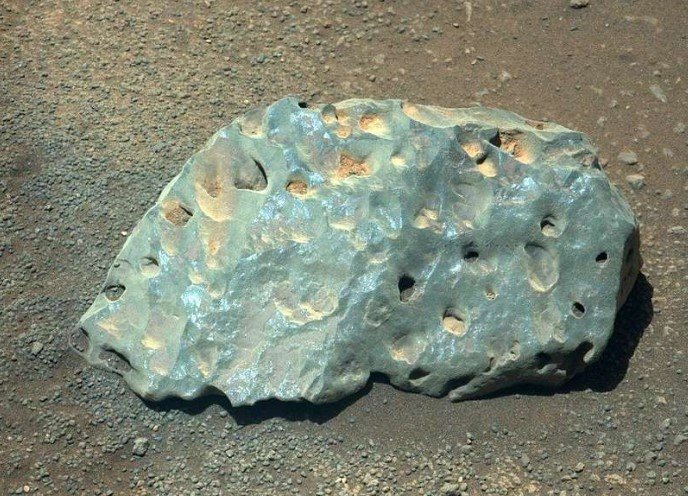Scientists are scratching their heads over a strange new discovery on Mars — hundreds of tiny spherules covering a rock in the Jezero crater. The find, reminiscent of past Martian mysteries, could hold clues to the planet’s watery past.
A Rock Unlike Any Other
NASA’s Perseverance rover, currently exploring the Witch Hazel Hill region on the rim of the Jezero crater, recently came across an unusual rock. The rock, nicknamed ‘St. Pauls Bay,’ stands out for one strange reason — it’s covered in hundreds of tiny, bead-like spherules.
These spherules aren’t the first of their kind on Mars. NASA’s Opportunity rover found similar formations in the Gale crater, nicknamed ‘Martian Blueberries,’ believed to have formed in ancient rivers. But the new spherules on St. Pauls Bay have scientists asking fresh questions.
Perseverance’s cameras captured a striking color image: pale, brownish-orange soil speckled with small, light-toned rocks. But one rock, darker and rougher than the rest, stands out. It’s larger, vaguely diamond-shaped, and its surface is peppered with countless bumps.
Is this just another example of Martian geology, or something entirely new? That’s the mystery.

What Are These Spherules, Anyway?
Scientists are leaning on past discoveries to understand the new find. Previous spherules on Mars were interpreted as ‘concretions’ — small, spherical formations created by groundwater moving through rock pores over long periods. But there’s a catch.
- St. Pauls Bay wasn’t formed where it stands today. It’s believed to have been transported from elsewhere, possibly by ancient water flows. That raises new questions about how the spherules formed and whether they’re a sign of past liquid water in the region.
- The rock’s surface is different. Unlike the smoother ‘Blueberries’ from Opportunity’s mission, the new spherules seem to cling to a rough, dark gray rock, suggesting different environmental conditions during formation.
The team is using Perseverance’s suite of instruments — including its laser and X-ray spectrometer — to analyze the spherules’ composition. Early signs suggest they may contain minerals that only form in watery environments, hinting at Mars’ wet past.
A Pattern Emerging
This isn’t Perseverance’s first odd find. Earlier, the rover discovered sedimentary rocks with textures resembling popcorn. The alternating light and dark rock bands visible from orbit over Witch Hazel Hill suggest a complex geological history — one that may involve ancient rivers or even lakes.
Let’s break down the timeline of spherule discoveries on Mars:
| Rover | Year | Location | Spherule Type | Possible Formation |
|---|---|---|---|---|
| Opportunity | 2004 | Gale Crater | ‘Blueberries’ | Water concretions |
| Perseverance | 2025 | Jezero Crater | Unknown | Under investigation |
Each discovery adds to a growing pattern. The spherules could be more than just geological quirks — they might be remnants of a long-gone watery world.
What’s Next for Perseverance?
The rover’s mission isn’t just about spotting strange rocks. It’s collecting samples to send back to Earth, where advanced labs can take a closer look. If these spherules contain minerals tied to water — or even organic materials — they could provide vital clues in the hunt for past life on Mars.
NASA scientists are particularly curious about the differences between St. Pauls Bay’s spherules and the Martian Blueberries from Opportunity’s mission. Are they made of the same material? Do they suggest different environments, or even different periods in Mars’ history?
One thing’s for sure: Perseverance keeps turning up surprises. And with every discovery, Mars becomes a little less alien — and a little more familiar.
